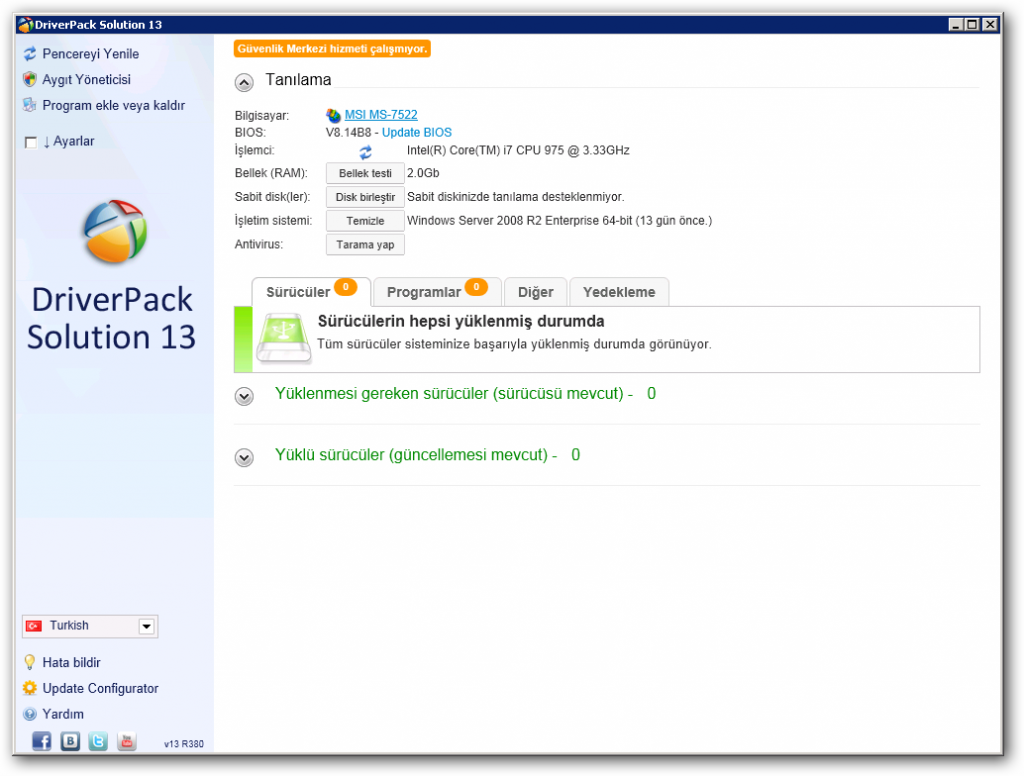Driver Pack Solution 2013 Indir Tek Link
- Driverpack Online 2013
- Download Driverpack Solution 2013 Offline
- Driverpack Solution Automatic Installation Of Drivers

AdvertisementSometimes Android USB devices won’t connect to a Windows system. For attempts at connecting via the Android Debug Bridge (ADB), bad Android USB drivers that load in place of the right ones often cause the issue — and users can’t uninstall these drivers using conventional means. Removing the offending drivers and installing “universal” ADB drivers should fix this problem.If you can’t connect an Android device to your computer — and you’ve already enabled “USB Debugging” ( Need to allow USB Debugging on your Android? We explain how to use debugging mode for pushing commands from your PC to your phone.) — then this is the method for you. When turned on, USB debugging allows users direct access to the file system of an Android device from a PC. Without debugging enabled, users can only interact with their phone’s media storage, such as the SD card.Here’s a short tutorial on ADB:Note: You must enable ADB on your Android device for this tutorial to work. Here’s a video on how to do that.
Driverpack Online 2013

OverviewFixing the problem takes about five minutes and three basic steps:. Connect your Android device via USB and remove the ADB drivers. Then disconnect your device. Run a USB and kill all your superfluous Android drivers;. Install.Step One: Connect DeviceFirst, connect your Android device via USB to your computer. This step allows your device to display in Window’s Device Manager. Fire up Windows Device Manager next.
I usually type “device manager” into the Search utility.Second, open Device Manager and remove your currently displayed Android ADB driver. Simply right click on the ADB driver to bring up the context menu – select Uninstall. Note: This prevents the same incompatible driver from loading upon reconnecting the Android device. This step is technically not required, but it will show you the driver causing the issue, in case it somehow reloads itself. Step Two: Kill Bad DriversFirst, unzip (USBDeview). Next, locate the unzipped folder and run the utility (no install required).
Download Driverpack Solution 2013 Offline
Nirsoft’s utility displays the total number of installed USB drivers on your computer.Take a look at the colored status indicator on the far-left of the USBDeview window. Green indicates that the device functions properly. Pink means the device can unplug and works properly (although it may not actually work properly). Red indicates a disabled USB device. Gray (circled, below) means the device is installed, but not connected. Second, remove all gray items with the words “Google”, “Linux”, “ADB”, or “Android” in the title. I always remove every item that’s not green, but be warned: Your experiences may differ.
Driverpack Solution Automatic Installation Of Drivers
You may end up needing to reinstall devices by removing them here.Note: The Nirsoft utility may show up as malware in a virus scan. It most assuredly is not. Step Three: Install Universal DriverKoush’s Universal ADB Driver (see link above) works for every Android device, no matter how exotic. You will need to perform a manual installation in order for Koush’s driver to work.First, the Universal ADB Driver then run the executable package, which installs the driver.Second, plug your Android device into your PC via USB.
The correct ADB drivers should load. You can check by going to Device Manager in Windows.Third, if the install process fails, you can manually update drivers. After connecting your device, go into Device Manager, locate the ADB/USB drivers, and right-click on them. In the context menu, choose “Update Driver”. Keep in mind two things: First, sometimes you need to check the notifications tray on your device for additional steps.
Second, sometimes Android devices show up in strange places inside of Device Manager. You may need to check every single device class (such as “Android Phone” or “Samsung”) in device manager.You’ll receive two options — choose “Manually Install Driver”. Next, choose “Browse my computer for driver software” and choose “Let me pick from a list of device drivers on my computer.”Then choose “Let me pick from a list of device drivers on my computer.” You will see a list of drivers. Choose one of these.
If it fails, repeat the process and locate another driver that works.It looks like this:If you cannot get any driver to work, you will need to force installation. Instead of choosing “ Let me pick from a list of device drivers on my computer ” in the previous step, you will choose “Browse for driver software on your computer” and manually find the directory where you installed Koush’s drivers.The location on your hard drive looks something like this: C:Program Files (x86)ClockworkModUniversal Adb DriversWindows will then install the drivers.
From now on, whenever you connect the Android device with debugging enabled, Koush’s drivers will load in place of the ones that failed to work. Universally GoodThis method of purging bad Android USB drivers and installing Koush’s drivers works for every Android device I’ve tried it on.
It’s ridiculous that Google never released a universal ADB driver for Android devices, despite the issues that many users continue to experience. While some wireless solutions exist, such as AirDroid, I’ve found this method more reliable.And for a more powerful Android device, check out these Want to get more control over your Android device? Try these apps that let you use ADB functionality without rooting.While you’re at it, learn how to Your drivers might be outdated and need updating, but how are you to know? Here's what you need to know and how to go about it., not just the ones related to Android!Explore more about:,.